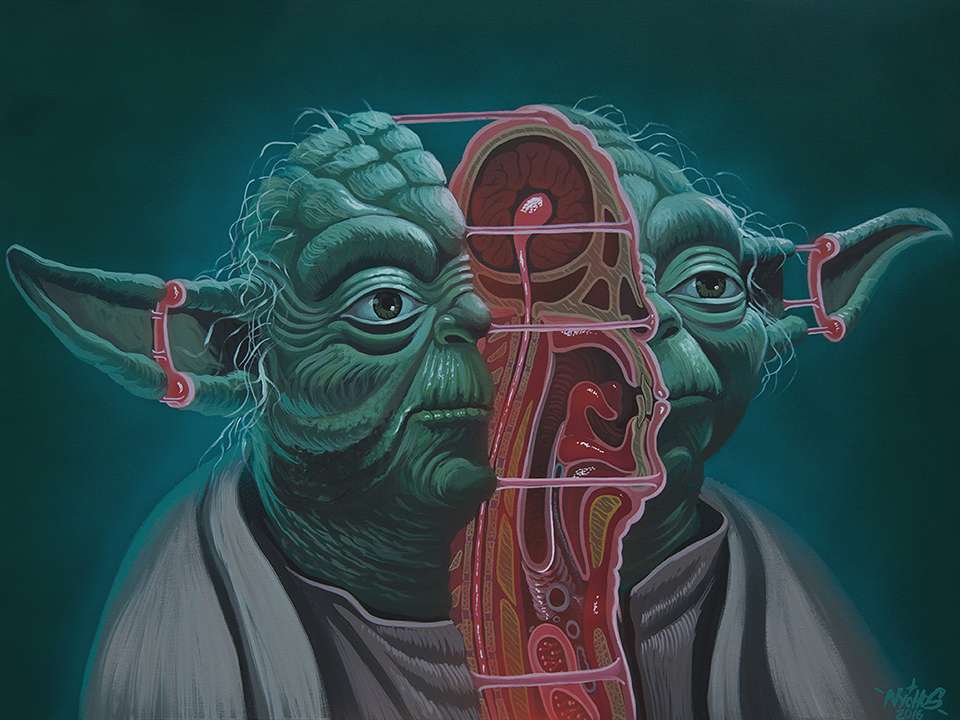5 Artists Influenced By Cartoons And Comics
Many artists take inspiration from cartoons, popular culture and recognisable characters in their work, often using them satirically as a comment on consumer culture or our image-obsessed society. Cartoons and characters from popular culture are a fantastic tool for contemporary artists. Not only are they recognisable for their creative style and iconic characters, they can also act as a symbol for the society in which we operate. Thus our perception of these figures is of great significance — a satirical mirror reflecting the culture, history and mind of an archetype citizen in orderly civilisation, easily lampooned. Read on to learn more about some of the most thought-provoking uses of cartoon figures in the art world.

1. Lichenstien
Most active in the 1960s, Roy Lichtenstien was an American pop artist whose comic-inspired work disrupted the art world. Lichtenstein often only used primary colors in his work, which were also the only shades of ink available to newspapers and magazines at the time. His paintings were formed through the use of dots, also reflecting the style of comic artwork, to create his paintings, which appear simple on a visual level, but were extremely demanding on a technical level.
Lichtenstein’s work defines the premise of pop art as we know it through satire and parody. Most of his most famous pieces, such as Whaam!, Look Mickey!, and Oh Jess I Love You Too But, were created in the early sixties and play with existing images from popular culture. Purposefully superficial, his use of grand themes of war, love and devastation mimicked comic-style art, hinting that even in our moments of individual drama and importance, we subconsciously imitate what we see in mass media. Many like to believe they are all living unique, individual lives, but Lichtenstein invites us to think differently — is this really true if we are so influenced by the media we consume?
2. Nychos
Nychos is known for his use of medical-style imagery, employing cross-sections, x-rays and translucencies which usually portray animals and characters taken from popular culture such as Yoda, Spiderman and Donald Duck. His spontaneous and unique creative process, which involves music and getting into a trance-like, meditative state, is arguably what distinguishes him from other street artists.
The resulting work merges morbid physicality with a colorful, cartoon-inspired style, and is as equally formidable in the gallery as it is in the street. By slicing up animals and childhood characters, his art leaves a profound effect on the viewer, using these graphic scenes as a way of projecting themes of mortality, violence and impermanence. Nychos pays respect to his childhood cartoon heroes, by giving them a more human form, while also imbuing them with a sense of mortality not usually seen in animated figures.
3. Opake One
Practising from the age of thirteen, Opake One is a London-based graffiti artist whose work experiments with a range of elements from the subculture, whether it’s tagging or creating large murals. In his innovative collection of work, Opake combines figures like Mickey Mouse, the Pink Panther, Popeye and Winnie the Pooh with a raw, instinctive style which provides an absorbing contrast for the viewer.
Opake’s Outlaws collection merges a punk aesthetic with a graffiti vibe. Its bold, block typeface and neon colours are a nod to punk subculture, but uses this style to present instantly recognisable cartoon characters. This makes images like a Pink Panther mugshot or a drunk Pinocchio all the more captivating and unique.
4. Stuart Mcalpine Miller
Stuart McAlpine Miller uses contrasting themes of cartoons, superheroes and pop culture, presenting an engrossing blur of desirable objects, which reflects our attention-burdened consumer-centric society. Comic references are surrounded by European models, representing the far-fetched idealism of Western culture — the belief that we can all attain a ‘model’ appearance, when in fact, it’s as idealistic and impractical as a cartoon character. However, Miller’s style distorts our perception by blurring these images, suggesting that in reality, they’re not so different from each other.
His representation of pop culture figures also conveys their ephemerality, as images overlap and blur into each other, as if imitating the saturated mind of a person engrossed and brainwashed with consumer-culture. This convoluted blend of images, memories, stimulations and aspirations ultimately suggest, in their depth, something more shallow once applied to a canvas.
The work of Takashi Murkakami draws inspiration from traditional Japanese paintings, anime and sci-fi, and takes the form of paintings, sculptures, and occasionally films. In Celestial Flowers, for example, there is a prevalent use of bold graphics and colorful anime figures. Murakami emerged into fame with his “Superflat” theory, which linked contemporary Japanese visual culture to historic Japanese art. Yet he is unafraid of more commercial concerns, having collaborated with fashion brand Louis Vuitton in 2003.
Murakami’s array of work incorporates pop-culture, fine art and cartoons, and is known for the subtle ambiguity it places between high art and low art. The artist believes there is a rigidness and pretentious nature to Western ‘high art’, and by attempting to combine it with ‘low art’, there is often a great deal of resistance. This is why Murakami’s work is so important, by forcing viewers to re-evaluate these boundaries.